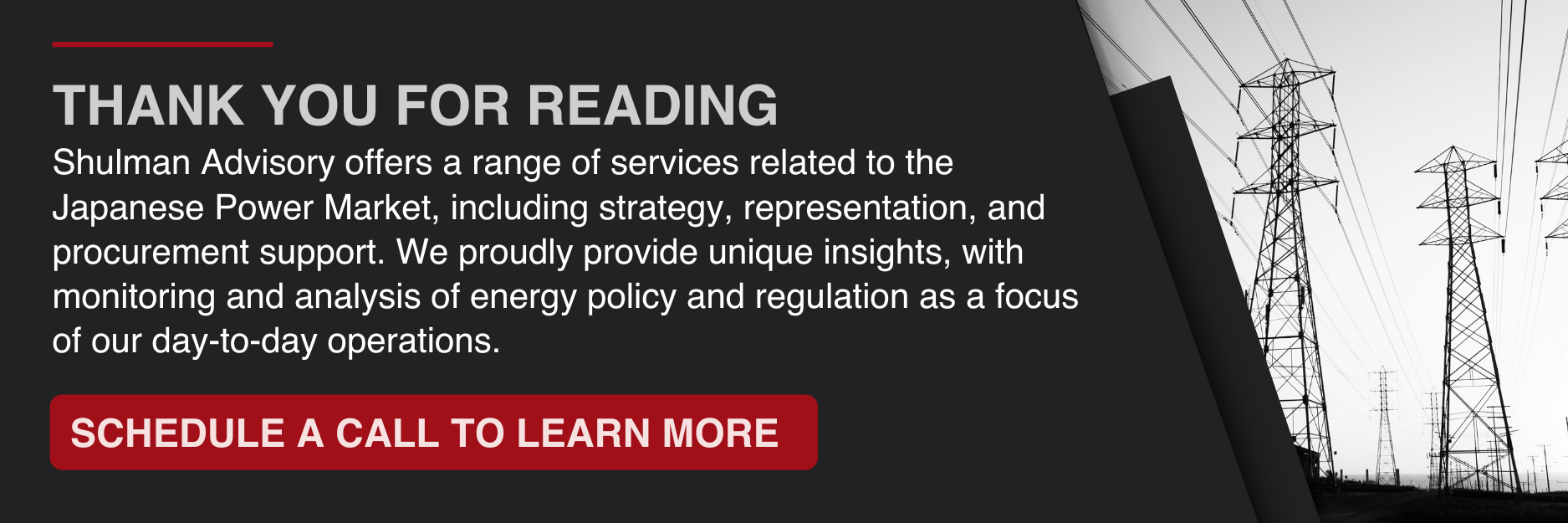Publication date: July 4, 2024
Japan Power Industry Developments of the First Half of 2024

We are pleased to present our “Japan Power Market Industry Highlights for the First Half of 2024.” This report offers a comprehensive overview of pivotal events and advancements in Japan’s renewable energy sector from January to June, including key milestones, new projects, policy changes, and market trends. We trust you will find it informative as you explore the latest insights and opportunities.
Let us now delve into the article.
Japan’s Offshore Wind Auctions Enter Round 3, Eyes Expansion Into EEZ and Developing Floating Technology
Offshore wind has been a focal point of this year; Japan aims to achieve 10GW of offshore wind power by 2030 and 30-45GW by 2040, as part of its broader strategy to increase renewable energy capacity. The Ministry of Economy, Trade and Industry (METI) has held two public auctions totaling 3.5GW, with the winning bids for Round 2 announced in March featuring zero-premium levels, the earliest operational start dates, and an emphasis on local supply chain development. Simultaneously, Japan’s government approved a draft amendment to existing legislation to allow for the installation of offshore wind power in its Exclusive Economic Zone (EEZ), and continues to explore floating OSW technology through new demonstration projects, supported by legislative amendments and nationwide calls for proposals.
Hydrogen Society Promotion Act to Be Enforced This Summer
The Japanese Cabinet approved the Hydrogen Society Promotion Act in May, which will be enforced from the summer of 2024. The legislation aims to certify and subsidize businesses producing, importing, and supplying low-carbon hydrogen, targeting a 50% increase in domestic hydrogen supply to 3 million tonnes by 2030 and 20 million tonnes by 2050. Subsidies, funded by GX Transition Bonds, will help offset the cost disparity with fossil fuels, supporting companies that produce hydrogen with low CO2 emissions, and hub development must commence by FY2030, with eligible businesses expected to be selected by the end of 2024. For further reading, click here.
Carbon Capture and Storage (CCS) Business Bill Is Passed: Japan’s Parliament Passed a Law to Establish a Permit System for CCS Technology.
The government will designate storage areas, and issue permits through a public selection process, granting “prospective drilling rights” and “storage rights” to businesses. The law also mandates monitoring for CO2 leaks and holds operators accountable for any accidents.
The First Long-Term Decarbonization Auction Showed BESS Is Booming
The first Long-Term Decarbonization Power Source Auction (LTDA) was held in January this year, aiming to support renewable energy projects with long-term financial incentives of 20-year contracts. The inaugural auction met its target of 4GW, with 1.67GW of capacity awarded to pumped hydro and battery energy storage systems (BESS), surpassing the initial 1GW collective procurement target for these technologies. METI is preparing for the second LTDA auction early next year. For further reading, click here.
Gearing up for the Emissions Trading System Towards 2026
Discussions began surrounding Japan’s new Emissions Trading System (ETS), set to start in 2026. Participation in the ETS will be a prerequisite for companies to receive decarbonization support from the proceeds of the GX transition bonds (or Climate Transition Bonds). Companies will also be required to be members of the GX League, an initiative aiming to foster business collaboration for emissions reductions.
Japan to Set “GX 2040 Vision” to Accelerate Decarbonization Efforts
On May 13th, the Green Transformation (GX) Implementation Council led by Prime Minister Kishida announced plans to create the “GX 2040 Vision,” a new national strategy guiding decarbonization and industrial policy across four key areas: (1) Ensuring robust energy supply; (2) GX industrial location; (3) GX industrial structure; and (4) GX market creation. With rising power demand due to new semiconductor plants and data centers, it is crucial to expand decarbonized power sources and ensure a stable supply. The GX 2040 Vision will be finalized within the current fiscal year by a Leaders’ Panel which will launched after June. For further reading, click here.
METI and ANRE Establish Public-Private Council to Boost Japan’s Competitiveness in Perovskite Solar Cells
METI and ANRE formed a public-private council to discuss the expansion of perovskite solar cells (PSC). PSCs are noted for their thin, flexible, and lightweight appearance and potential cost-effectiveness. They present a significant opportunity for Japan, which is the second-largest producer of iodine, a primary raw material for this technology. The council aims to develop a comprehensive strategy for PSC to enhance Japan’s global competitiveness by expanding on its 2030 gigawatt-scale mass PSC production system goals. For further reading, click here.
The 6th Basic Environmental Plan Called for “Transformative Change”
MOE published the 6th Basic Environment Strategy, a comprehensive outline of its long-term approach to environmental protection. More than in previous years, this year’s Basic Environment Strategy took on an unabashedly urgent tone, emphasizing immediate action through policy and strategy on climate change, biodiversity loss, and pollution. For further reading, click here.
Japan’s Strategic Energy Plan Is Under Review
Japan’s Strategic Energy Plan, updated by METI every few years, outlines long-term energy policy. The 6th Plan, approved in October 2021, is being revised to meet COP30 commitments, emphasizing energy security, economic efficiency, sustainability, and safety, with goals for carbon neutrality by 2050 and a 46% emissions reduction by 2030 from 2013 levels. The 7th Plan, due by March next year, will align with the “GX 2040 Vision” and focus on renewable energy expansion, nuclear safety, energy-saving practices, and investments in energy storage and hydrogen technology.
________________________________________________________________________________________

